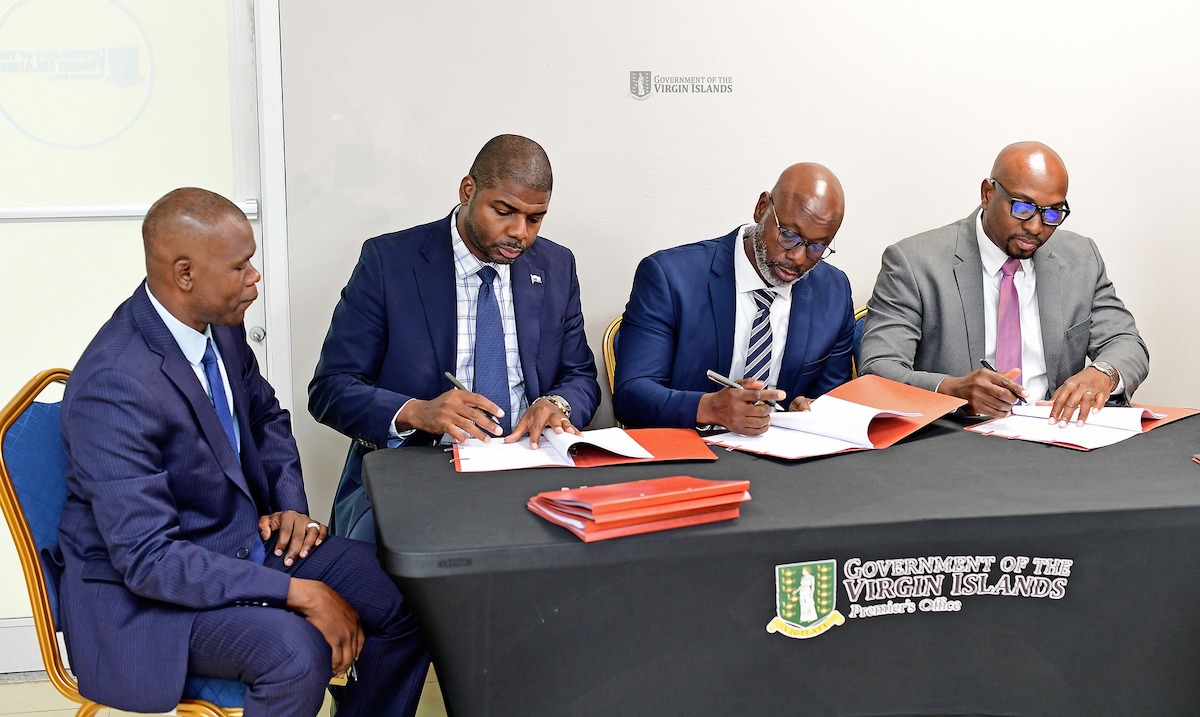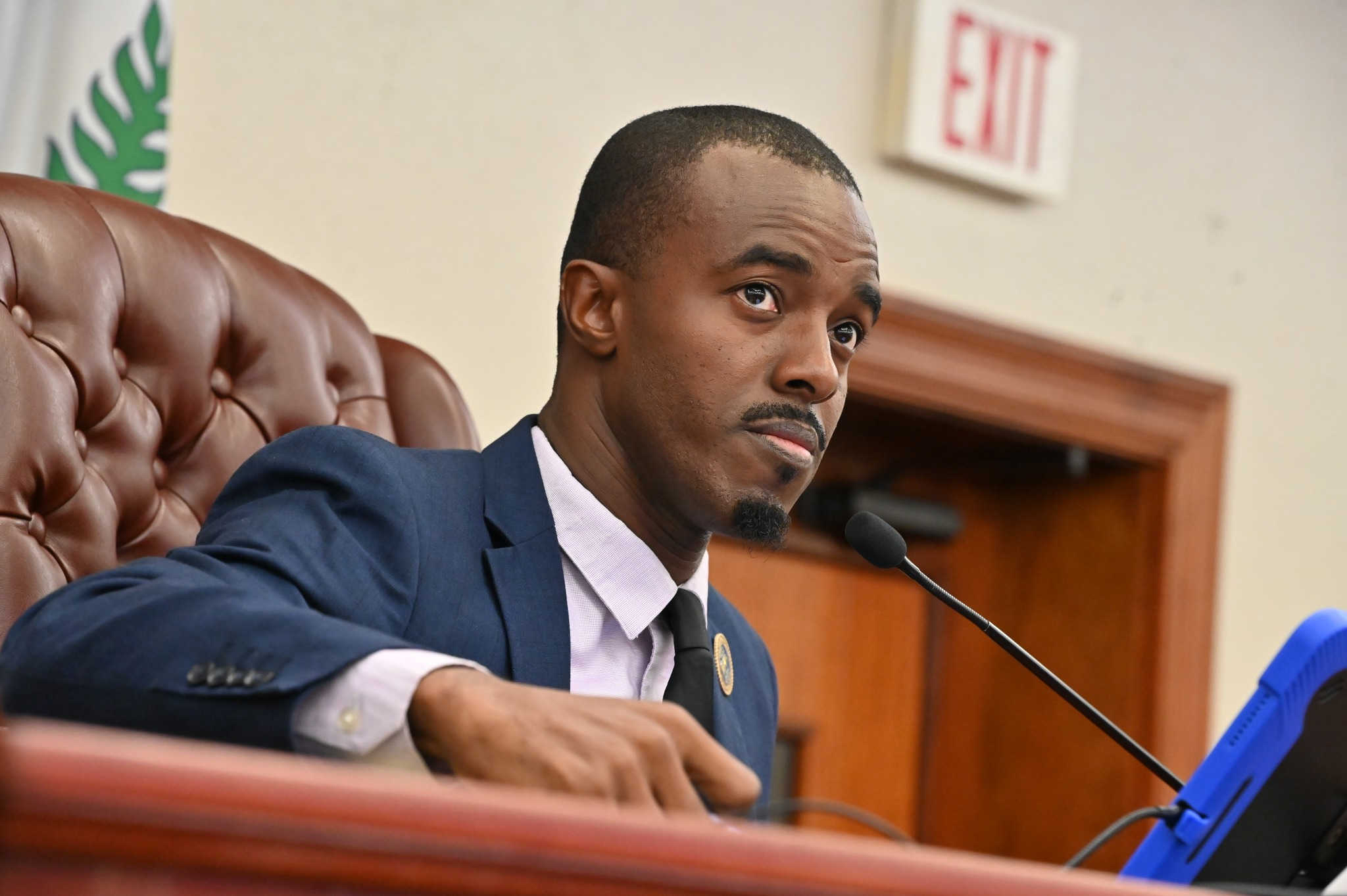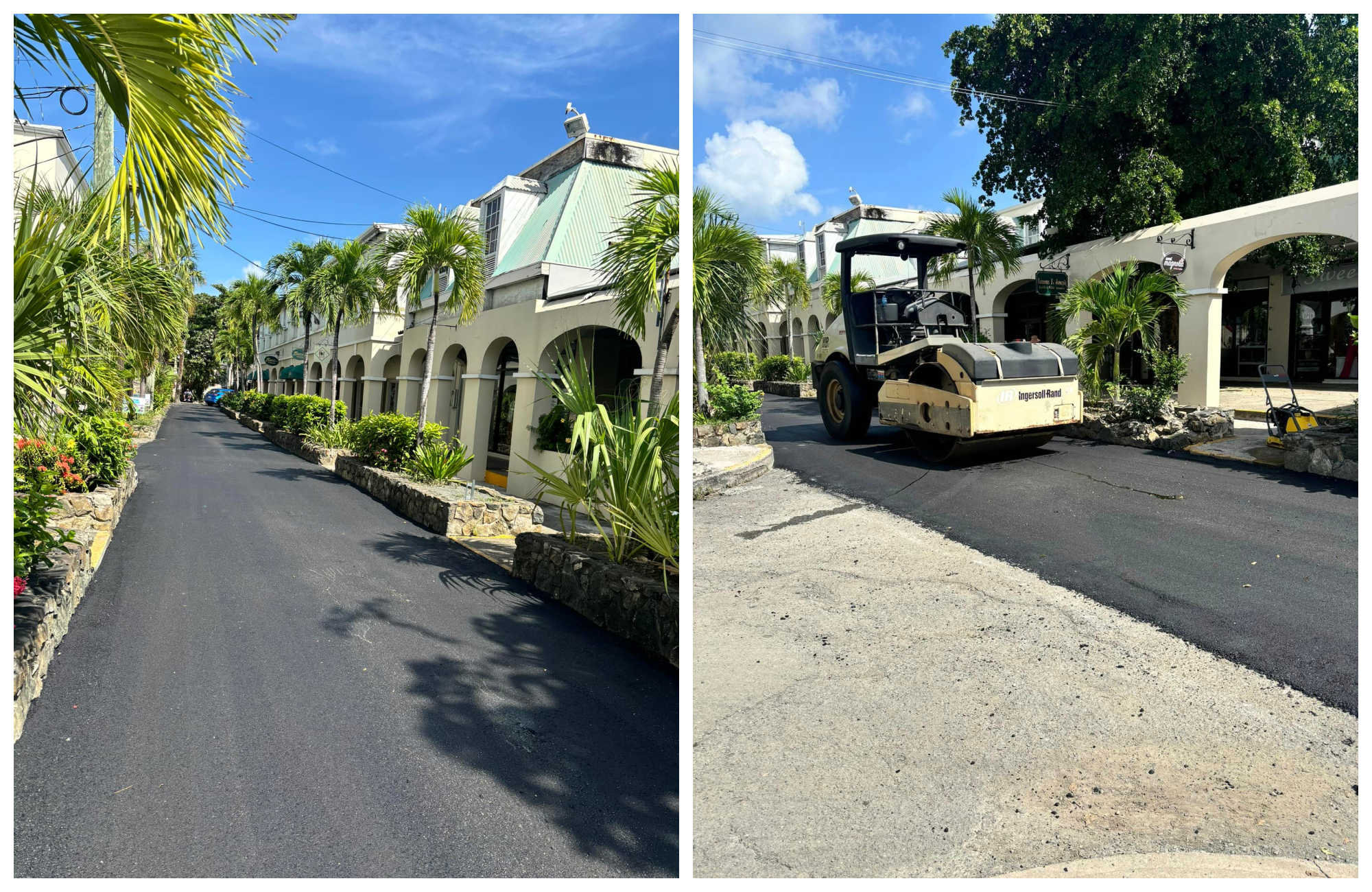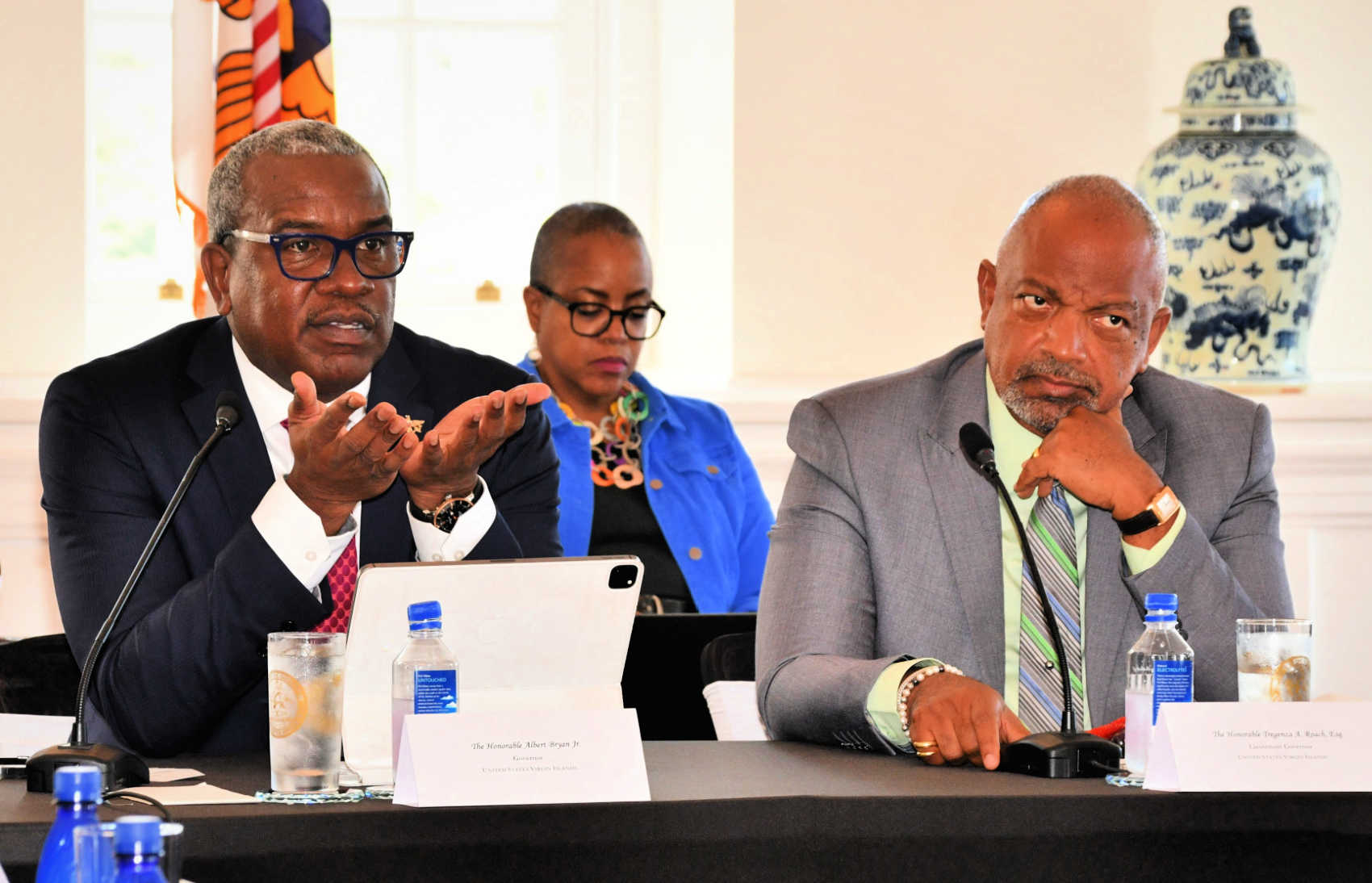

After more than a year of promises, the government has signed a $100 million loan deal to develop critical infrastructure including several recovery projects that have been stalled for lack of funding since the hurricanes of 2017.
At an Oct. 31 signing ceremony broadcast on Facebook but not open to the media or public, Premier Dr. Natalio “Sowande” Wheatley said that the loan from CIBC First Caribbean Bank (Cayman) Limited aligns with the government’s 2024-2026 Medium-Term Fiscal Plan and the Medium-Term Debt Strategy approved by Cabinet and the House of Assembly.
“We set out as a government to identify critical infrastructure projects in our recovery and development programme that would be candidates for immediate loan funding,” Dr. Wheatley said. “The initial list, if my memory serves me right, had projects with a total budget of about $300 million. However, we wanted to ensure that our borrowing at this time was sustainable.”
He added that the total damage from hurricanes Irma and Maria in 2017 was initially estimated at $3.6 billion, including about $482 million in damage to land-based infrastructure.
“Our roads were left in a dilapidated state; several of our schools and recreational facilities were destroyed; businesses and homes were destroyed,” he said.
Loan plans
Under the new loan, $91.65 million will be spent on “critical infrastructural projects within the government, including recurrent and capital expenditures,” according to the premier.
Another $7.91 million will go toward refinancing balloon payments due in 2026 on existing loans, and the final $440,000 will cover transaction costs associated with arranging the loan, he said.
The projects to be funded by the new loan will be guided by the National Sustainable Development Plan, which lays out a roadmap for the territory through 2036, Dr. Wheatley added.
6.5 percent interest
The loan will be repaid over an 18-year period with a fixed interest rate of 6.5 percent annually for the first ten years with options for adjustment thereafter, according to the government.
The interest will be paid semi-annually, starting two quarters after the financial close, with a principal payment moratorium for the first three years.
“While this new loan will increase the central government’s overall debt stock, it is important to note that this decision was made following rigorous due diligence and analysis to ensure that debt servicing remains manageable and sustainable,” Dr. Wheatley said. “The recently laid Medium-Term Debt Strategy 2024-2026 outlines a comprehensive framework guiding the government’s borrowing policies and debt management practices.”
The loan documents were on display at the signing ceremony, which the media and public were not invited to attend. (Photo: GIS)
Procurement
The loan deal was struck following a formal procurement process initiated on April 26, when six local financial institutions were invited to submit proposals by May 28, according to government.
Four proposals were received, and after a “thorough evaluation” the Central Tenders Board recommended and Cabinet accepted the CIBC proposal pending further negotiations on the terms, government stated.
The government was represented in the loan negotiations by the Ministry of Finance together with Senior Crown Counsel Renard Penn and Walkers attorneys Omonike Robinson-Pickering and Matthew Cowman acting on behalf of the attorney general.
Spending breakdown
The premier said in September that nearly $54 million of the loan will be earmarked for infrastructure.
Almost $36 million, including some support from the Transportation Improvement Network Funds, will be spent on roadwork, he added.
Long-delayed sewerage work in East End and Long Look will get $7.5 million in investment, and a similar project in Cane Garden Bay will receive $3.9 million, according to the premier.
Other water-related projects in the territory will get $8 million, he said at the time.
The plan also includes $31 million for building projects and facilities improvements, including work on the shuttered Ralph T. O’Neal Administration Complex, according to the premier. A home ownership project will receive $6.5 million in funding, he said.
Loan guarantee offer
Though the $100 million loan is the largest in the territory’s history, it is much smaller than what officials previously envisioned to pay for a public-sector hurricane recovery initially projected to cost more than $700 million.
With the territory still reeling from the 2017 storms, the HOA voted in March 2018 to accept a United Kingdom offer of a loan guarantee worth about $400 million. As required by the deal, the government then established the independent Recovery and Development Agency to administer the funding.
However, negotiations subsequently stalled, and successive governments never accessed any loans under the guarantee, which would have been much cheaper than the CIBC loan.
In August 2022, shortly after becoming premier, Dr. Wheatley announced that the guarantee was “no longer on the table.”
In the meantime, the largest single source of recovery funding was a $65 million loan from the Caribbean Development Bank.
But without more money, many major recovery projects have stalled.
Related News

Javan James Won't Seek Reelection, Opts for Academic Pursuit

Latest Repairs Advance Downtown Christiansted Road Upgrades Ahead of Holiday Season

Bryan and Roach Out of Territory For Speaking Engagements, Senate President Assumes Local ...

